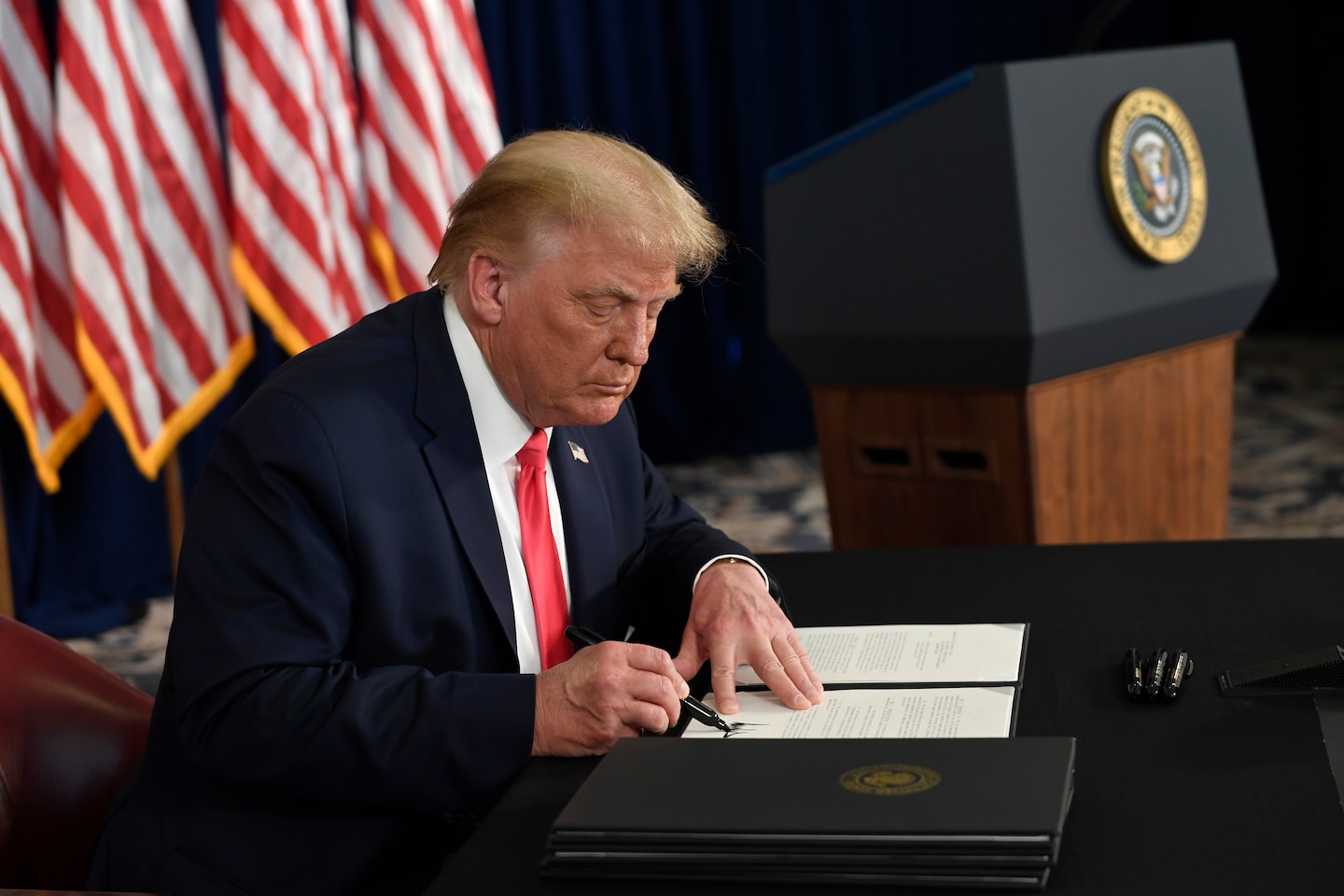Trump’s actions on pandemic relief aren’t illegal. They’re just ineffective.

That’s understandable — but wrong. Trump has so often exceeded normal limits on presidential authority that it is easy to assume unlawfulness on his part. But the problem with Trump’s actions in this instance isn’t that they are illegal or unconstitutional. It’s that they promise to be inadequate and ineffective. They are, at best, Band-Aids on an open wound. Still, they are Band-Aids that Trump has legal authority to apply under the power that Congress has allowed him to exercise in a disaster.
Start with the most significant action: a memorandum ordering the Federal Emergency Management Agency to approve payments to out-of-work Americans. The statute that authorizes this move, the Disaster Mitigation Act of 2000, allows the president, in consultation with the governor of each state, to provide financial assistance for “necessary expenses or serious needs resulting from [a] major disaster.”
The 31.3 million Americans now collecting unemployment insurance benefits are facing “serious needs” resulting from the covid-19 disaster. So the Trump administration’s argument that the statute authorizes cash aid to the unemployed appears a legally permissible interpretation. But while Trump claimed Saturday that “we’re all set up” for unemployed Americans to begin receiving $400 per week “without the Democrats,” getting this assistance to them won’t be simple.
First, the law requires states to bear 25 percent of cash-assistance costs. So for aid to reach people’s pockets, Trump will need help from governors — 24 of whom, incidentally, are Democrats. Not all governors have money available to pay their share, and some may need to reconvene legislatures for emergency sessions. Even if all goes according to plan, $400 a week is only two-thirds what unemployment insurance claimants received in federal aid through July. Thirty-one million Americans and their families still will see a sharp income drop this month.
In addition, Trump’s memo releases only $44 billion in FEMA funds, with $25 billion left in the bank for other FEMA efforts. If all states take FEMA up on the three-for-one match, the $44 billion will last five weeks. At that point, Trump will have to return to Congress for cash.
Trump’s other actions are even less effective — though equally lawful. He ordered Treasury Secretary Steven Mnuchin to allow employers of workers earning less than around $100,000 annually to put off paying the employee payroll taxes they owe until January 2021. Mnuchin has the authority to do this under the Taxpayer Relief Act of 1997, which — as amended — allows the treasury secretary to delay tax deadlines by up to 12 months in a presidentially declared disaster.
This does nothing to help those without jobs, and little for those who remain employed. Normally, employers withhold 6.2 percent of every paycheck to cover their employees’ portion of Social Security tax. The Trump administration, in effect, is saying, “We don’t need to see that money until next year.” Bluster aside, though, the president cannot — without Congress — make Social Security tax obligations go away. He can only postpone them.
Trump promised that if he wins reelection, “I plan to forgive these taxes and make permanent cuts to the payroll tax.” That’s a big “if.” Here’s another: Even if Trump is reelected, he’ll be facing a Congress in which neither party has shown enthusiasm for his payroll tax-cut ambitions. Employers therefore have every reason to worry that if they stop withholding payroll taxes now, they’ll face a large bill come January. As a result, many will continue to withhold, which means their workers won’t see the boost in take-home pay that Trump has touted. And if the money goes to workers, employers will owe the IRS come January — or else their employees will be responsible for these taxes — absent congressional action.
The one other substantive action Trump announced extends through the end of the year the current pause on federal student loan payments. (Trump also urged agencies to look for ways to address the coming eviction crisis, but offered no concrete steps.) Again, there is authority for this: The Omnibus Budget and Reconciliation Act of 1993 allows student loan deferral of up to three years for borrowers suffering “economic hardship.” Notably, the 1993 statute — like the two other laws authorizing Trump’s executive actions — was signed by President Bill Clinton and backed by then-Sen. Joe Biden. The deferral of student loan payments is a useful step for those with federal loans, though it leaves out 9 million borrowers with private loans, who won’t get help without further legislation.
The episode offers a sobering illustration of the limits of presidential power and the imperative of congressional involvement. Even when the president uses the full extent of his executive authority, the relief he can provide without additional funds or authorization from Congress is restricted. It’s not enough to forestall financial distress for millions of American families for longer than a brief moment. To do that, Trump will need to compromise with congressional Democrats — something he has proved incapable of doing.
The lesson of Trump’s orders, in other words, is not that the president alone can save us. It’s that he can’t.
Read more:






